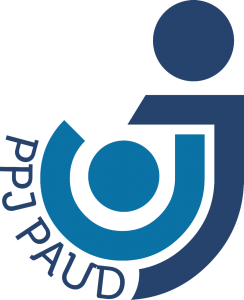What are the main lessons from Indonesia's CSR financial literacy education investment for early childhood?
Abstract
Keywords
References
Aloui, C. (2015). Co-movement between sharia stocks and sukuk in the GCC markets: A time-frequency analysis. Journal of International Financial Markets, Institutions and Money, 34, 69–79. https://doi.org/10.1016/j.intfin.2014.11.003
Amran, A. (2017). Social responsibility disclosure in Islamic banks: a comparative study of Indonesia and Malaysia. Journal of Financial Reporting and Accounting, 15(1), 99–115. https://doi.org/10.1108/JFRA-01-2015-0016
Azad, A. S. M. S. (2018). Sailing with the non-conventional stocks when there is no place to hide. Journal of International Financial Markets, Institutions and Money, 57, 1–16. https://doi.org/10.1016/j.intfin.2018.04.001
Bachtrog, D. (2013). Y-chromosome evolution: emerging insights into processes of Y-chromosome degeneration. Nature Reviews Genetics. https://www.nature.com/articles/nrg3366
Bananuka, J. (2018). Internal audit function, audit committee effectiveness and accountability in the Ugandan statutory corporations. Journal of Financial Reporting and Accounting, 16(1), 138–157. https://doi.org/10.1108/JFRA-07-2016-0062
Basov, S. (2014). On Sharia’a-compliance, positive assortative matching, and return to investment banking. Journal of International Financial Markets, Institutions and Money, 30(1), 191–195. https://doi.org/10.1016/j.intfin.2013.12.010
Bates, R. H. (2014). Markets and states in tropical Africa: the political basis of agricultural policies. books.google.com. https://books.google.com/books?hl=en&lr=&id=ko5FAwAAQBAJ&oi=fnd&pg=PP1&dq=loose+part&ots=XUvi2_lecF&sig=Ek3MZ4gwB30K4ZEKEAGBh7eZVLw
Budiarti, E., & Darmayanti, R. (2018a). Is implementing digital learning media beneficial in stimulating early childhood literacy skills? Jurnal Caksana: Pendidikan Anak Usia Dini, 1(2), 189–201.
Budiarti, E., & Darmayanti, R. (2018b). Validity of the Assessment Instrument in Developing Picture Stories Based on Local Wisdom: Is it valid? Jurnal Caksana: Pendidikan Anak Usia Dini, 1(1), 81–94.
Budiarti, E., & Darmayanti, R. (2019a). A 2010-2018 systematic literature review found that educational game tools aid early childhood learning. Jurnal Caksana: Pendidikan Anak Usia Dini, 2(2), 134–146.
Budiarti, E., & Darmayanti, R. (2019b). Why may kindergarten-aged children’s cognitive capacities be enhanced by “MOM” learning? Jurnal Caksana: Pendidikan Anak Usia Dini, 2(1), 69–78.
Cui, N. (2018). Applying gradient descent in convolutional neural networks. Journal of Physics: Conference Series. https://doi.org/10.1088/1742-6596/1004/1/012027
Ferguson, T. S. (2014). Mathematical statistics: A decision theoretic approach. books.google.com. https://books.google.com/books?hl=en&lr=&id=qZLiBQAAQBAJ&oi=fnd&pg=PP1&dq=loose+part&ots=t6ESVn-LoK&sig=PSvXGV-sPybUCy-kb9f69Coxqds
Ferris, S. P. (2013). CEO overconfidence and international merger and acquisition activity. Journal of Financial and Quantitative Analysis, 48(1), 137–164. https://doi.org/10.1017/S0022109013000069
Hillman, A. M. (2014). A literature review on disciplinary literacy: How do secondary teachers apprentice students into mathematical literacy? Journal of Adolescent and Adult Literacy, 57(5), 397–406. https://doi.org/10.1002/jaal.256
Kahneman, D., & Tversky, A. (2013). Prospect theory: An analysis of decision under risk. … of Financial Decision Making: Part I. https://doi.org/10.1142/9789814417358_0006
Karis, T., Gerhart, G. M., & Glaser, C. (2010). From Protest to Challenge: A Documentary History of African Politics in South Africa, 1882-1990. Challenge and victory, 1980-1990. books.google.com. https://books.google.com/books?hl=en&lr=&id=otqLgx3RMwYC&oi=fnd&pg=PA3&dq=loose+part&ots=Ud8GJ-egut&sig=e90b9i7utTz8UG1xQ5gKE4_3ZdY
Karpoff, J. (2008). The cost to firms of cooking the books. Journal of Financial and Quantitative Analysis, 43(3), 581–611. https://doi.org/10.1017/S0022109000004221
Khalid, A. A. (2018). The role of shariah supervisory board on internal Shariah audit effectiveness: Evidence from Bahrain. Academy of Accounting and Financial Studies Journal, 22(5).
Palop, J. J., & Mucke, L. (2016). Network abnormalities and interneuron dysfunction in Alzheimer disease. Nature Reviews Neuroscience. https://www.nature.com/articles/nrn.2016.141
Pradono, P. (2016). Towards model of community economic empowerment through tourism activities in Bogor Regency, West Java, Indonesia. International Journal of Economics and Financial Issues, 6(6), 46–49.
Puhakainen, P., & Siponen, M. (2010). Improving employees’ compliance through information systems security training: an action research study. MIS Quarterly. https://www.jstor.org/stable/25750704
Segel, E., & Heer, J. (2010). Narrative visualization: Telling stories with data. IEEE Transactions on Visualization and …. https://ieeexplore.ieee.org/abstract/document/5613452/
Sugianto, R., Darmayanti, R., Amany, D. A. L., Rachmawati, L. N., Hasanah, S. N., & ... (2017). Experiment on Ability to Understand Three Dimensional Material Concepts Related to Learning Styles Using the Geogebra-Supported STAD Learning Model. Al-Jabar: Jurnal Pendidikan Matematika, 8(2), 205–212.
Vidyastuti, A. N., Darmayanti, R., & Sugianto, R. (2018). The Role of Teachers and Communication Information Technology (ICT) Media in the Implementation of Mathematics Learning in the Digital Age. Al-Jabar: Jurnal Pendidikan Matematika, 9(2), 221–230.
Vonderwell, S. K., & Boboc, M. (2013). Promoting formative assessment in online teaching and learning. TechTrends. https://doi.org/10.1007/s11528-013-0673-x
Vosen, S., & Schmidt, T. (2011). Forecasting private consumption: survey‐based indicators vs. Google trends. Journal of Forecasting. https://doi.org/10.1002/for.1213
Winters, J. A. (2011). Oligarchy. books.google.com. https://books.google.com/books?hl=en&lr=&id=trsFIM5h3P8C&oi=fnd&pg=PR9&dq=loose+part&ots=bLs1S_9qwL&sig=CDmpvmlmbN8X1LbBVx3cntBFq94
DOI: https://doi.org/10.31326/jcpaud.v1i1.1942
Refbacks
- There are currently no refbacks.

This work is licensed under a Creative Commons Attribution-ShareAlike 4.0 International License.
Editorial Address
Universitas Trilogi jakarta
Jalan TMP Kalibata No.1, RT.4/RW.4, Duren Tiga, Kec. Pancoran, Kota Jakarta Selatan, Daerah Khusus Ibukota Jakarta 12760




.png)



